A Pragmatic Approach to Form Measurement
When time is of the essence, exploring for diameter variation instead of exact dimensions offers a good, practical means of measurement on the shop floor.
Measuring a part for size variation is relatively straightforward. There may be hundreds of ways to measure a 20-mm inside diameter, but that list can easily be narrowed down based on the location of the check, its tolerance, how many parts need to be measured, the skill of the inspector, and possibly the surface finish and form of the parts.
With the specification for the tolerance of the diameter, there is also likely to be a form requirement, such as roundness, squareness, straightness, or even concentricity or cylindricity.
Circular-geometry gages, with their precision spindles, are the standard and the best method for measuring out-of-roundness. But these can be elaborate pieces of equipment (especially those that can measure concentricity and cylindricity), and they are usually confined to applications where a very high degree of accuracy is required concerning part geometry.
Most jobs, however, have fairly simple requirements for roundness. While a true roundness measurement requires a complex description of the geometric and dimensional relationships of dozens or hundreds of points on a diameter, most job specifications simply call for parts to be round within a certain fraction of an inch. In other words, a rudimentary interpretation would say that as long as the diameter variation is within the roundness call-out, the actual shape of the surface is secondary. The same can be said for squareness, straightness, concentricity or cylindricity requirements.
This being the case, there are ways to approach the problem of form measurement that can provide a pragmatic, low-cost alternative to the circular-geometry gage. Although these methods rarely give a technically accurate measurement of roundness, they are often close enough to give a good indication of the functional implications of an out-of-round condition.
If you are faced with high-volume manufacturing or fast process times, you probably do not have the time to take the parts offline to measure the “per specification” form of roundness, for example, on a geometry system. Thus, if you understand the nature of your out of roundness, you may be able to infer its form with dimensional gaging at the point of manufacture and be confident that the parts being measured would be good if measured per the specification.
There is a little bit of the chicken or the egg here in that you must know what the form of the part generally is like before you select the dimensional gage to measure it.
Understanding the geometry involved is the key. Generally speaking, out-of-roundness is either symmetrical, involving regular or geometrically arranged lobes or points on the part’s circumference, or asymmetrical, where the lobing is not regular. Most machining processes create symmetrical lobing, producing either an even or an odd number of lobes. Even-numbered lobing is sometimes seen in precision boring operations, caused by a worn or out-of-balance spindle. Odd-numbered lobing may be caused by a three-jaw chuck (producing a three-lobed workpiece), or a centerless grinder (which may create a five-lobed condition). Asymmetrical lobing cannot be measured by the means described here. It is evidenced by irregular travel of an indicator and is usually indicative of a problem in the tool.
When an even number of lobes is arranged geometrically on the part, each lobe is opposed by one diametrically opposite. The piece, therefore, will have major and minor diameters. Knowing this, we can gage the part using simple two-point, or diametrical, measurement methods. The difference in the measurements will generally be twice the out-of-round value due to the diametric-versus-radial method of assessment. For example, if our specs call for a part that is round within 0.0001-inch variation in radius, we can measure using a simple comparator and reject any part where the total indicator reading (TIR) is larger than 0.0002 inch.
Parts with an odd number of lobes pose a slightly more complicated problem and really should be measured with a gage that has three measuring points 120 degrees apart, such as a tri-bore gage or three-jet air plug/ring. With the proper gage, the same two-point-gage method used above would work, but in this case any total variation of three times the diametric variation would be acceptable.
It’s clear from these two examples that measuring the part to the roundness spec in effect cuts down the tolerance and ensures that that roundness spec is apt to be met. When tolerances are at the 0.0001-inch level, this roundness spec is probably acceptable. But cut this by a factor of 10, and things can change fast.
Other form checks, such as cylindricity, might be able to be estimated by exploring the part more, or by creating special fixtures to inspect for squareness or straightness to approximate these form inspections. But these are a topic for another day.
Again, while these methods are only approximate, the techniques described here provide a good, practical means to determine an indication of out-of-roundness on the shop floor when time is of the essence and parts need to be moved.
Related Content
Choosing The Right Grinding Wheel
Understanding grinding wheel fundamentals will help you choose the right wheel for the job.
Read More6 Steps to Take Before Creating a CNC Program
Any time saved by skipping preparation for programming can be easily lost when the program makes it to the machine. Follow these steps to ensure success.
Read More10 Tips for Titanium
Simple process considerations can increase your productivity in milling titanium alloys.
Read MoreSelecting The Right Welder
Many machine shops, on occasion, have a need for welding. It may be for maintenance purposes, repair or to fill the odd contract. This story is a welding process primer for those shops whose main business isn't welding but need to know some basics.
Read MoreRead Next
3 Mistakes That Cause CNC Programs to Fail
Despite enhancements to manufacturing technology, there are still issues today that can cause programs to fail. These failures can cause lost time, scrapped parts, damaged machines and even injured operators.
Read MoreThe Cut Scene: The Finer Details of Large-Format Machining
Small details and features can have an outsized impact on large parts, such as Barbco’s collapsible utility drill head.
Read More.jpg;maxWidth=970;quality=90)



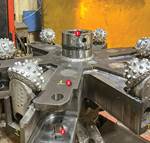

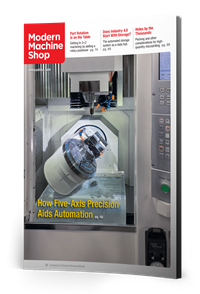

.jpg;maxWidth=300;quality=90)



.png;maxWidth=300;quality=90)

.png;maxWidth=300;quality=90)





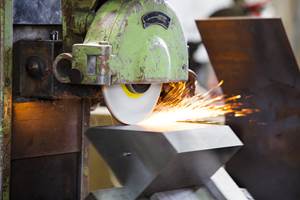

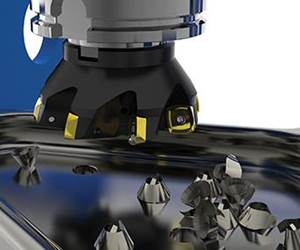
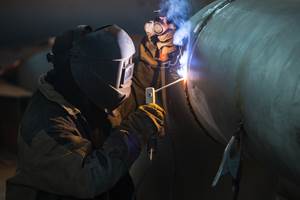


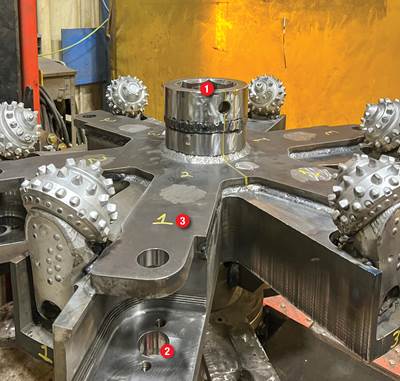
.jpg;maxWidth=970;quality=90)